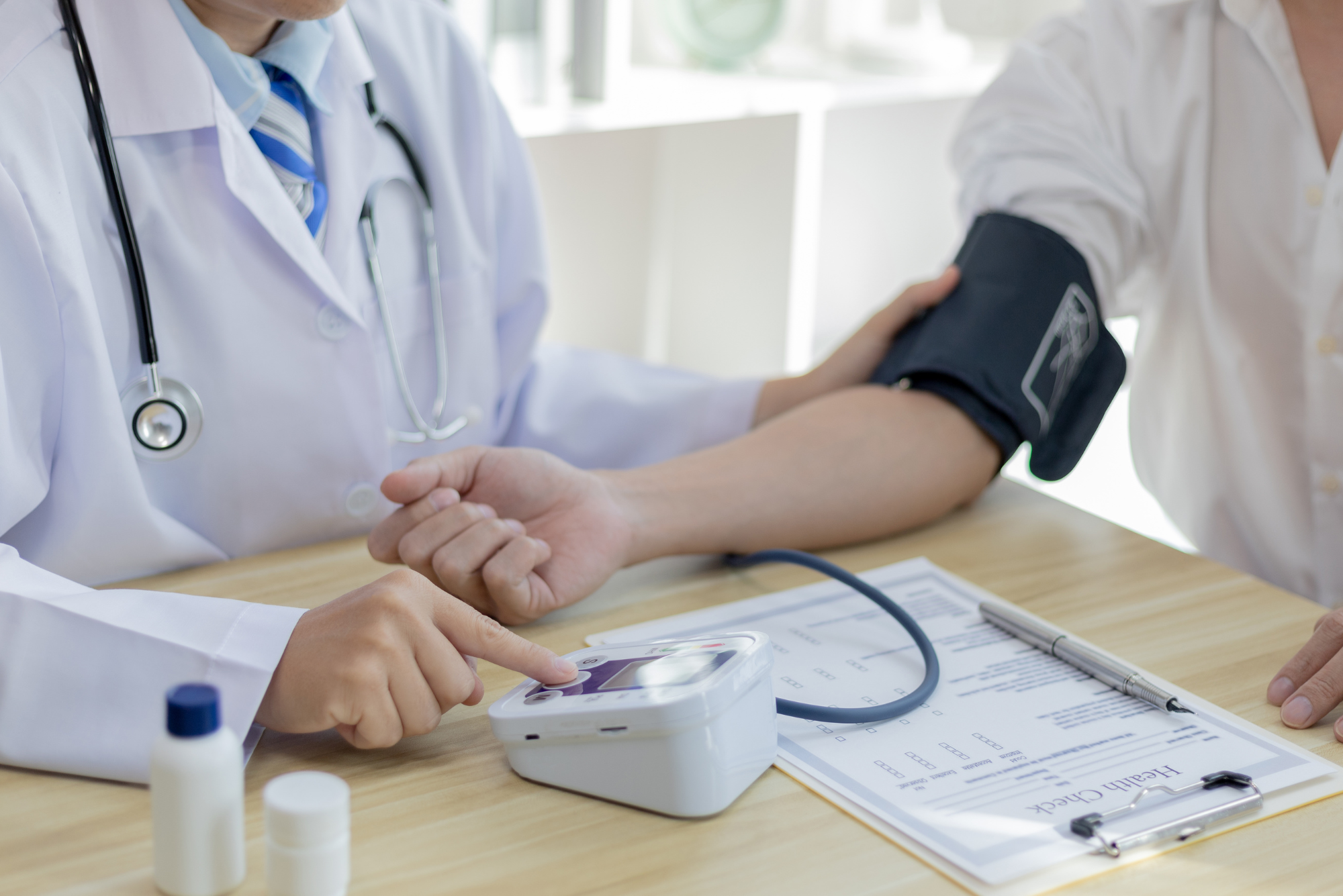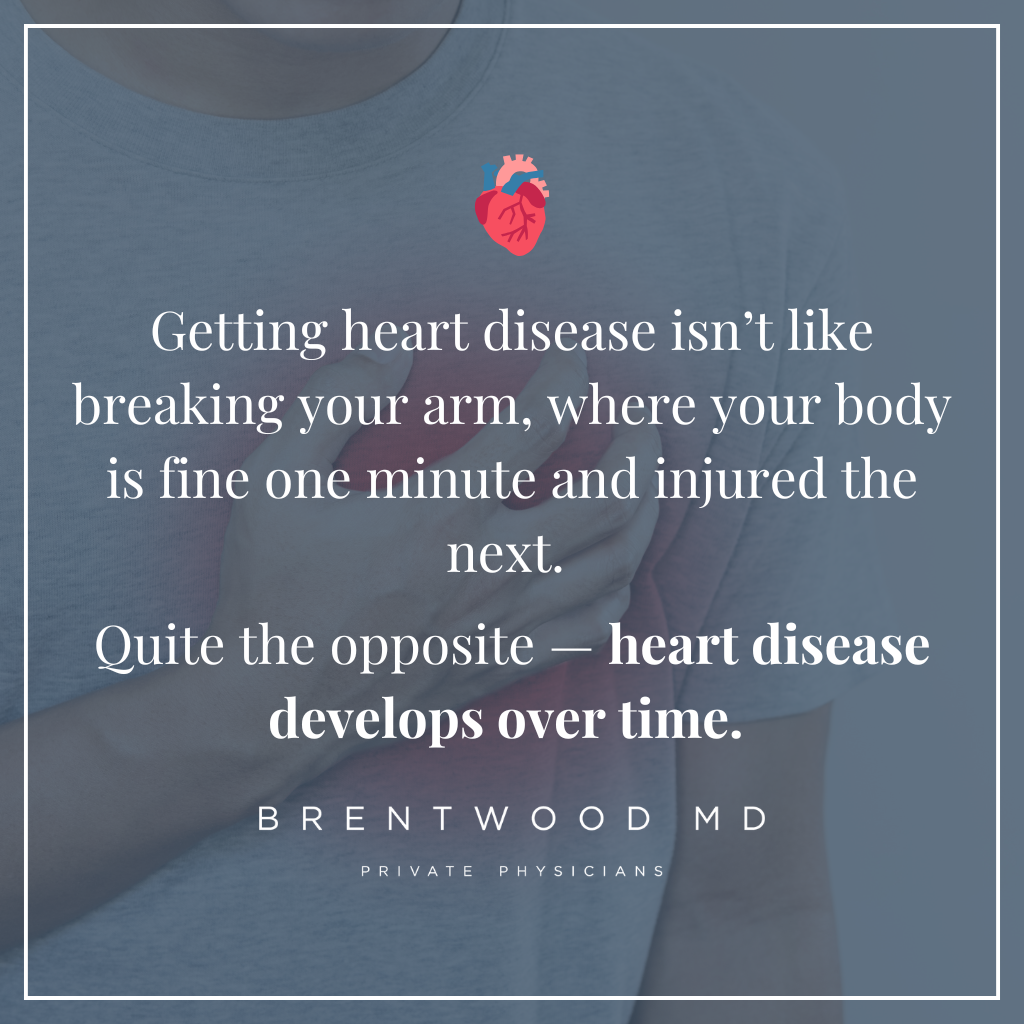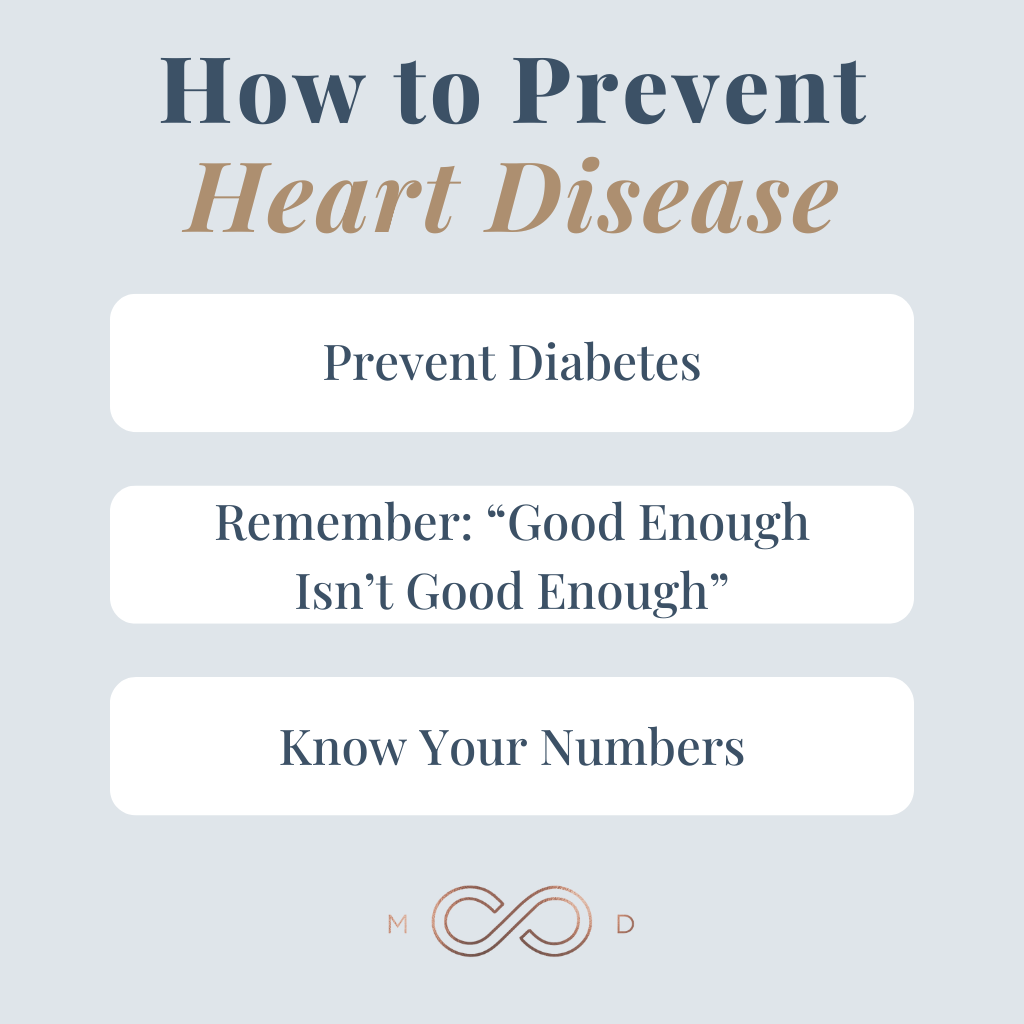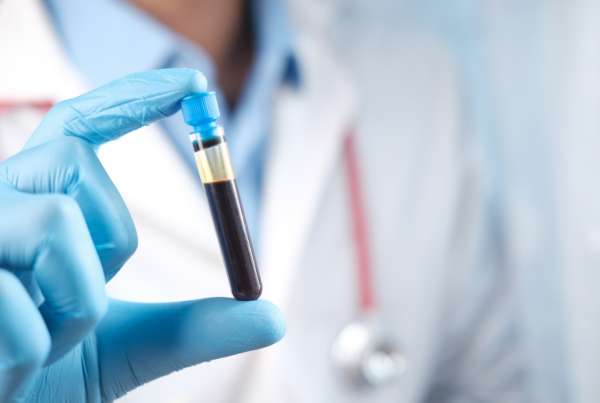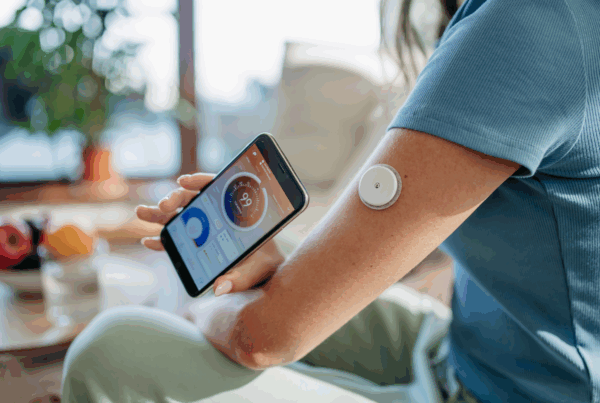We live in a world filled with dangers, but some are more obvious than others. We all know the risks posed by drunk driving and drug addiction, but we may overlook the severe risks of heart disease.
The truth is that 1 in every 5 deaths in the U.S. is caused by heart disease. Put another way, every 33 seconds, another person dies from cardiovascular disease. In fact, more people die of heart disease than of cancer every year!
And this isn’t just in the U.S. Heart disease is a global phenomenon, affecting people of every race, region, creed, and country.
But why? Heart disease isn’t new, so why are we failing so spectacularly at preventing the progression — if not the onset — of this disease?
As we’ll discuss below, I believe part of the problem is the traditionally binary thinking around heart disease; you either have it, or you don’t. If you’re close to the edge, doctors say you have borderline heart disease.
To understand why this is a problem and how it leads us farther down the cardiovascular path we’re on, let’s talk about what heart disease is, what causes it, and the practical problems with the concept of “borderline heart disease.”
What Is Heart Disease?
Heart disease isn’t one single disease, but an umbrella term that encompasses three distinct disease processes: hypertension, heart attack, and stroke.
Hypertension
Hypertension, more commonly known as high blood pressure, is the first of three conditions we categorize as heart disease.
Blood pressure is the amount of force your blood exerts against your artery walls as it flows. If your arteries become narrower (atherosclerosis), your heart has to work harder to pump blood through them to supply your body, increasing the force on your vessel walls. Imagine the difference between breathing in normally and trying to breathe the same amount of oxygen through a straw.
This increased pressure actually further damages the artery walls, leading to even higher blood pressure over time. Left unchecked, the process leads to serious cardiovascular consequences, like heart attacks, down the road.
Unfortunately, hypertension can exist for years without causing symptoms. Many people only discover high blood pressure during annual physicals, which is why regular doctor’s visits are so valuable.
Heart Attack
Most of us associate heart disease with heart attacks. A heart attack occurs when blood attempting to flow into the heart becomes blocked, unable to carry life-sustaining oxygen to the heart muscle. If not restored quickly, this loss of blood flow results in the death of cardiac tissues.
How does this happen? Heart attacks occur due to plaque buildup in the arteries, also known as atherosclerosis. Inflammation in the lining of the arteries that feed blood into heart tissue triggers the atherosclerotic process to begin. Cholesterol and other factors then deposit plaque within the artery wall.
The plaque starts out soft and flexible. Due to its unstable nature, this is the most dangerous type of plaque. Soft plaques can rupture, causing a clot to form and travel downstream. As the clot wedges itself into a smaller portion of the artery, blood flow is blocked and heart cells begin to die. This is a heart attack.
Heart attacks are potentially deadly events frequently characterized by tightness and pain in the chest or arms, shortness of breath, and sudden dizziness. While these are the most common symptoms, some people — women especially — may experience milder or less obvious symptoms like indigestion or abdominal pain. Some heart attacks strike without warning, while others develop slowly over weeks while giving subtle signs.
Stroke
A stroke is essentially a heart attack in the brain. As in a heart attack, a stroke occurs when the brain’s blood supply becomes reduced or blocked. In the vast majority of cases, this happens due to a blocked blood vessel, though a smaller percentage are the result of a bleed. Without sufficient blood, brain tissues are deprived of oxygen and nutrients, leading to cell death within minutes.
The symptoms of a stroke are unique since the brain is the affected organ. Facial drooping on one side, arm weakness, and trouble speaking are classic signs to look for. Other symptoms include confusion, severe headache, and trouble seeing or walking.
The sooner someone experiencing a stroke can get medical attention, the better. With swift treatment, symptoms may be reversible. But only immediate medical attention can treat a stroke and prevent long-term disability or death.
Who Does Heart Disease Affect?
Heart disease can affect anybody, male or female, African American or Caucasian, but certain risk factors dramatically increase your vulnerability to heart disease:
- Smoking
- Family history of heart disease
- Age
- Diabetes
- Obesity
- Unhealthy diet
- High blood pressure
- High cholesterol
How Do You Get Heart Disease?
Like so many other chronic diseases, there’s no single path toward heart disease. It’s a multifactorial disease with many potential causes. However, certain risk factors, habits, and lifestyle choices — many of them preventable! — accelerate the development of heart disease.
Smoking
Above and beyond anything else, smoking is the number one preventable cause of heart disease. Despite the correlation between smoking and lung disease, another disease lurks in the smoker’s future.
The truth is that 100% of smokers will eventually develop heart disease. It’s just a matter of time.
The chemicals in tobacco smoke cause the cells that line blood vessels to become inflamed and swollen. This is a major trigger for atherosclerosis — the depositing of those unstable plaques we talked about above. This narrows the blood vessels, causing increased blood pressure that further injures vessel walls and triggers the cascade that cultivates heart disease.
The carbon monoxide in tobacco smoke also reduces the oxygen in your blood and forces your heart to pump harder just to do its job. At the same time, nicotine stimulates adrenaline, which in turn accelerates your heartbeat and raises your blood pressure, forcing your heart to work even harder.
This dangerous cycle continues until your heart simply can’t take it anymore, and a heart attack or stroke occurs.
Diabetes
Diabetes is the fastest-growing disease on the planet, and it’s so dangerous that it’s considered a “coronary artery disease risk equivalent.” In other words, even if you don’t have documented heart disease, a diabetes diagnosis is considered the same as a heart disease diagnosis. That’s how inevitable heart disease is when you have diabetes!
Aside from quitting smoking, normalizing your blood sugar is the most valuable action you can take to prevent your risk of heart attack and stroke.
Adults with diabetes aren’t just at higher risk for heart disease, but they may also develop heart disease at a younger age and experience more severe heart disease. So, even if you haven’t developed diabetes but are noticing increasing insulin resistance, it’s important to take steps now to change course.
With commitment and the right strategic support, it’s possible for many people to gain greater control over their blood sugar and reduce their risk of heart disease, even if they live busy, fast-paced lives.
What You Might Not Know About Heart Disease
Many people — including doctors — make the mistake of viewing heart disease as a disease you either have or don’t have. But heart disease exists on a spectrum of illness.
Getting heart disease isn’t like breaking your arm, where your body is fine one minute and injured the next. Quite the opposite — heart disease develops over time.
The causes of heart disease brew inside your body, year after year, until symptoms gradually become more obvious. Unfortunately, this leads many intelligent and successful adults to shrug off their symptoms. They’ll say, “Oh, my blood pressure is borderline, so it’s fine, not a crisis,” or, “I just have borderline heart disease, it’s not an emergency.”
Having “borderline” heart disease — or borderline anything — doesn’t make it acceptable. The term “borderline” makes your condition sound less threatening, but the truth is that a borderline reading is already a sign of trouble. In reality, it’s your final opportunity to create better habits before dangerous consequences develop.
If you ignore borderline heart disease metrics, whether that’s borderline blood pressure, cholesterol, or blood sugar levels, then health complications will fester until they culminate in full-blown heart disease.
The True Danger of “Borderline” Heart Disease
Imagine a young, relatively healthy man with a blood pressure of 135/90. He knows the ideal blood pressure is 120/80, but his numbers are close enough that he dismisses the difference.
This man probably says, “Nah, I don’t have blood pressure problems. I mean, my levels aren’t perfect, but I’m fine! There’s no emergency!”
Does that sound anything like you?
If this man can ignore the risk of a 135/90 blood pressure, he’ll probably blow off 145/98 when he turns 40, and then shrug off 160/100 when he turns 50. Meanwhile, two decades have gone by with elevated blood pressure causing trauma to his blood vessels and generating plaque in his coronary arteries.
Then one day, at the age of 66, after this man has become the president of his company and raised a family he’s proud of, he starts sweating, he’s short of breath, and he’s crippled by blinding pain in his chest — he suffers a massive heart attack. If he’s lucky enough to survive and wonder, “Woah, how did that happen!?” the answer can be found in the 20 years that he viewed his borderline hypertension as no big deal.
Instead of ignoring your own “borderline” heart disease the same way a high school student shrugs off a C+ on a chemistry test (“Hey, it’s passing, right?”), it’s time to be honest with yourself.
Are you currently at your ideal blood pressure and cholesterol levels? If you’re not, you need to turn the ship around and sail far away from that border. It’s the best way to prevent heart disease and preserve your quality of life.
After a lifetime of being a high-achieving mover and shaker in this world, don’t let a preventable disease stop you in your tracks.
How Can You Prevent Heart Disease?
You don’t want to put yourself in a position of crisis. Reacting to your heart disease after your stroke or heart attack is like reacting to your financial budget problems after your bank account hits zero: It becomes infinitely harder.
If you really want to avoid heart disease and enjoy a lifetime unrestricted by chronic health problems, you need to take action now. The steps below aren’t difficult, but they’re some of the most powerful yet subtle changes you can make.
Prevent Diabetes
Type 2 diabetes affects nearly 40 million adults in the United States alone, and the number of new cases doubles every year!
The good news is that diabetes is largely preventable through strategic eating habits. You don’t need to starve yourself to prevent diabetes; you simply need to adopt healthier, smarter choices around food.
Carbohydrate Reduction
First, reduce the amount of carbohydrates you eat, especially in the form of refined sugar and processed or boxed foods. A consistently heavy carb intake spikes your blood sugar and forces more insulin into your system. Your body eventually gets used to this excessive flow of insulin as it attempts to process and transport such high blood sugar. This insulin resistance quickly becomes diabetes.
A few of the healthy and delicious foods that can help stabilize your blood sugar include the following:
- Avocados
- Olive oil
- Organic, grass-fed butter
- Almonds and macadamia nuts
- Spinach, broccoli, asparagus, cauliflower
- Bell peppers
- Legumes
- Fish, beef, pork, chicken
- Eggs
- Full-fat dairy and cheese
Intermittent Fasting
Another useful strategy for tackling insulin resistance is time-restricted eating, or intermittent fasting. In intermittent fasting, the dogma is on when you eat, not what you eat, which many people find easier to maintain than food-restrictive diets.
To start intermittent fasting, most people simply skip breakfast and stop eating earlier in the evening. That’s it! This gives your body a minimum of 12 hours without any new calories or sugar to process, allowing your pancreas to rest and, eventually, your cells to become insulin-sensitive again.
Remember: “Good Enough Isn’t Good Enough”
When the waiter gets your order wrong, but brings you a slice of the salmon you love, that’s still good enough! But when your blood pressure reading or blood sugar levels are higher than recommended, don’t shrug them off as good enough.
If you continue to procrastinate on improving your health, you’ll end up in the back of an ambulance with your family, business, investments, and legacy at risk due to your poor health. You’ll be forced to bail water out of a sinking ship instead of enjoying a breezy, sunny day on your yacht.
Know Your Numbers
This is tough for so many people, so if you’re one of them, you’re definitely not alone. Learning all the details you need to know about your numbers — blood pressure, cholesterol, blood sugar, triglycerides — is like ripping off a Band-Aid. You’re not sure how much it’ll hurt, and you don’t know what you’ll find on the other side, but it must be done!
Some of the most important numbers for you to know include:
HDL
HDL, or high-density lipoprotein, is widely known as “good” cholesterol. It acts like a garbage collector by picking up cholesterol from the walls of your arteries and transporting it for disposal in the liver. With a healthy HDL level of 55 mg/dl or above, your body also benefits from HDL duties like shielding free radicals, reducing inflammation, and preserving artery function.
LDL
LDL, or low-density lipoprotein, is known as “bad” cholesterol because it builds up on the walls of your arteries like plaque, leaving less space for blood to flow through. This is why high LDL is associated with health problems like heart attack, stroke, and heart disease.
The lower your LDL cholesterol, the lower your risk of complications. An ideal LDL level is <100 mg/dl, while a “borderline” heart disease level ranges between 130 and 159 mg/dl. Anything above 160 mg/dl is a huge, undeniable red flag for heart disease!
Triglycerides
Triglycerides are a type of fat the body produces from excess blood sugar and from calories it doesn’t use immediately. They’re stored in your fat cells and released for energy (as ketones) between meals, but eating more calories than you burn, especially from high-sugar foods, causes a surge in triglycerides in the blood. A high triglycerides reading is a major risk factor for heart attack, stroke, and heart disease.
Lp(a)
Lipoprotein(a) is a unique lipoprotein only recently identified as a risk factor for cardiovascular disease. It exists in the blood to carry cholesterol, fats, and proteins through the body. Genetics determines how much lipoprotein(a) your body makes, and it remains relatively steady throughout your lifetime. If too much Lp(a) accumulates, the arteries gradually narrow until blood struggles to flow through.
Hemoglobin A1C
Hemoglobin is a protein in red blood cells that’s responsible for carrying oxygen throughout the body. A hemoglobin A1C test helps diagnose type 1 and type 2 diabetes and assess diabetes management by measuring what percentage of hemoglobin is coated with sugar over the life of the red blood cell, which is about 90 days.
In other words, your hemoglobin A1C shows your average blood sugar over the past three months. This confirms whether you have good blood sugar control or a lack thereof. A normal reading is considered less than 5.7%, while 5.7–6.4% is considered “borderline” (there’s that term again), and 6.5% and up means diabetes.
Body Fat Percentage
Your body fat percentage is simply a measure of the portion of your body weight consisting of fat. Fat is essential for life, but too much body fat puts you at higher risk of heart disease and other serious complications. It’s recommended that men stay under 17% body fat while women stay under 24%.
Cleerly Heart Scan
A relatively new technology in the world of heart disease screening is Cleerly’s coronary computed tomography angiography. It’s a mouthful, but all it really means is you get a cardiac CT scan from an adequate local imaging center, and Cleerly then uploads it to their AI platform to get detailed images of your coronary arteries and their plaque contents.
Previously, the only way to get a similar look into your cardiovascular system was to insert a catheter with a camera into a blood vessel. This provides a much more pleasant option and gives you incredible insights into your plaque burden and what actions you might need to take today to prevent a heart attack or stroke in your future.
What Are the Best Ways to Treat Heart Disease?
There’s no denying the importance of preventing heart disease while you still have the time. However, you might be reading this with an existing diagnosis of heart disease or borderline heart disease, wondering how to address your current state of health. Though there’s no single magic cure for heart disease, you can still strategically adjust your lifestyle habits and use proven treatments to improve your longevity and quality of life.
More than anything else, you need to find an experienced, compassionate, and attentive doctor who will work as your advocate and help you pursue better health. It’s not enough to visit your physician once a year for a quick checkup, then go back to your normal routine of struggling to eat well, exercise, and avoid diabetes and heart disease. You need a partner who knows you and will work with you to proactively tailor a strategy for avoiding disease and living a long, healthy life.
I’ve made it my mission to understand my members’ health from the inside out so I can help them do more than just survive — I can help them thrive. They receive the type of thorough evaluation and long-term treatment they need to address their unique needs.
Since heart disease exists in many different forms along an unpredictable spectrum, you need to work with your doctor to maximize your health. Did you have a heart attack or do you have frequent chest pain? Does your family have any history with heart problems or diabetes? Do you need to lose body fat or find stress relief techniques? Do you have diabetes that needs to be reversed?
There’s no one-size-fits-all solution, and only the right doctor can uncover the deepest roots of your borderline heart disease, diabetes, or other health issue to recommend a sustainable, effective, and long-term treatment plan.

Dr. Aaron Wenzel is a concierge physician specializing in the care of fast-moving entrepreneurs, executives, and public figures in the Nashville, TN area. Dr. Wenzel’s diverse life experience and extensive training in family medicine, emergency care, nutrition, and hormone replacement therapies give him the unique platform to provide unmatched care for his patients.



